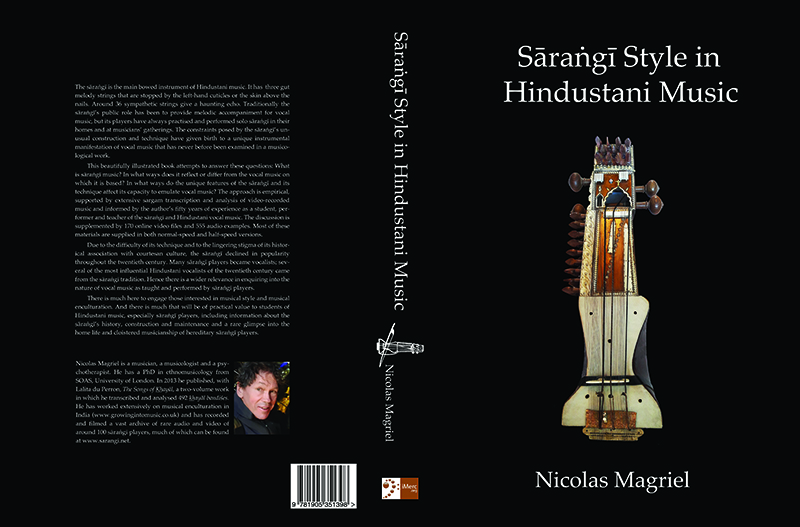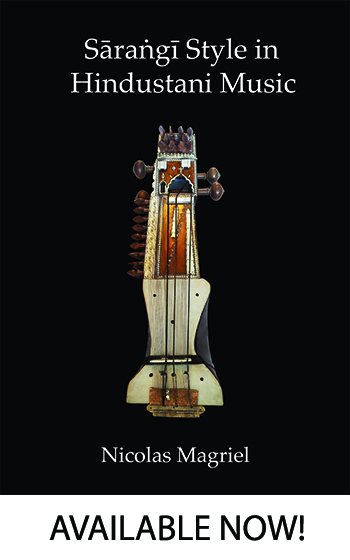My book, Sarangi Style in Hindustani Music, was published by the International Music Education Research Center (IMERC) Presson 10 October, 2021. This is the fruit of several years' work—a labour of love. It is available on Amazon including amazon.com, amazon.co.uk, amazon.de, amazon.fr, amazon.it, amazon.es, amazon.ca and amazon.jp.
I was horrified to realize, only after publication, that Amazon KDP does not print books in India, so on amazon.in, the book is not available at its normal price. It will need to be ordered from one of the European or American sites, and of course shipping could be expensive. I am working at finding a way around this. I am, however, now selling Sarangi Style in Hindustani Music directly from this site to most countries in the world. To buy direct from me, please click here.
UPDATE APRIL 2024: a hardcover edition of Sarangi Style will soon be available, published by Indica Books, only for sale in South Asia.
Please see the book description below.

This is a large volume weighing nearly two kilograms. Here is the Amazon book description:
The sarangi is the main bowed instrument of Hindustani music. It has three gut melody strings that are are stopped by the left-hand cuticles or the skin above the nails. Around 36 sympathetic strings give a haunting echo. Traditionally the sarangi’s public role has been to provide melodic accompaniment for vocal music, but its players have always practised and performed solo sarangi in their homes and at musicians’ gatherings. The constraints posed by the sarangi’s unusual construction and technique have given birth to a unique instrumental manifestation of vocal music.
This beautifully illustrated book attempts to answer these questions: What is sarangi music? In what ways does it reflect or differ from the vocal music on which it is based? In what ways do the unique features of the sarangi and its technique affect its capacity to emulate vocal music? The approach is empirical, supported by extensive sargam transcription and analysis of video-recorded music and informed by the author’s fifty years of experience as a student, performer and teacher of the sarangi and Hindustani vocal music. The discussion is supplemented by around 170 online video files and 555 audio examples. Most of these materials are supplied in both normal-speed and half-speed versions.
Due to the difficulty of its technique and to the lingering stigma of its historical association with courtesan culture, the sarangi declined in popularity throughout the twentieth century. Many sarangi players became vocalists; several of the most influential Hindustani vocalists of the twentieth century came from the sarangi tradition. Hence there is a wider relevance in enquiring into the nature of vocal music as taught and performed by sarangi players.
There is much here to engage those interested in musical style and musical enculturation. And there is much that will be of practical value to students of Hindustani music, especially sarangi players, including information about the sarangi’s history, construction and maintenance. Organological appendices include images and discussion of 321 sarangis. This book also gives a rare glimpse into the home life and cloistered musicianship of hereditary sarangi players.
Product Details
- Publisher: International Music Education Research Center (IMERC) Press (October 10, 2021)
- Language: English
- Paperback: 614 pages
- ISBN-10: 1905351399
- ISBN-13: 978-1905351398
- Weight of product: 1.77 kg
- Dimensions: 21.01 x 3.53 x 29.69 cm



